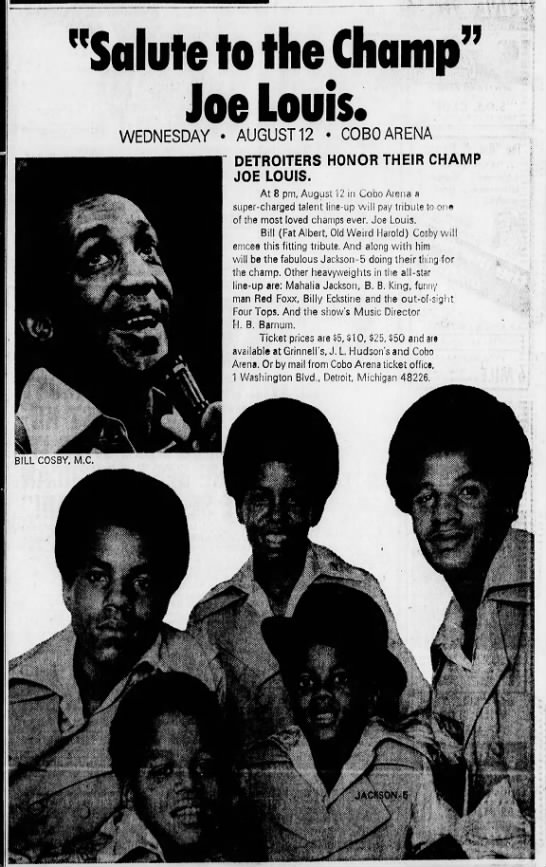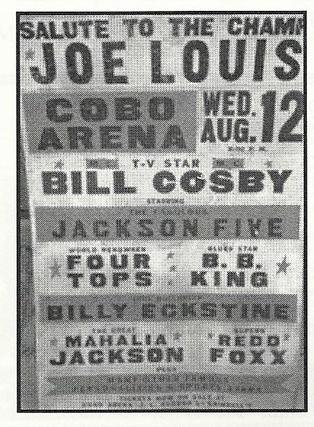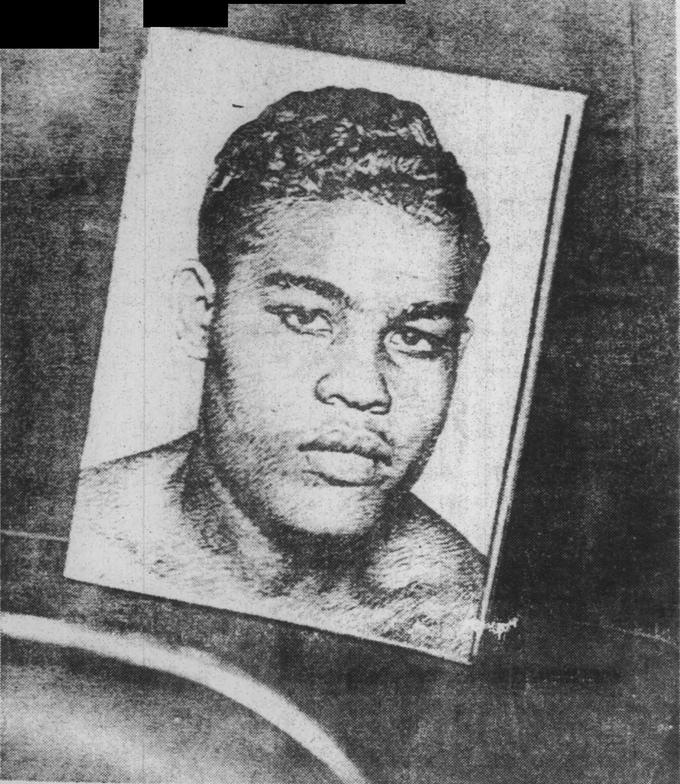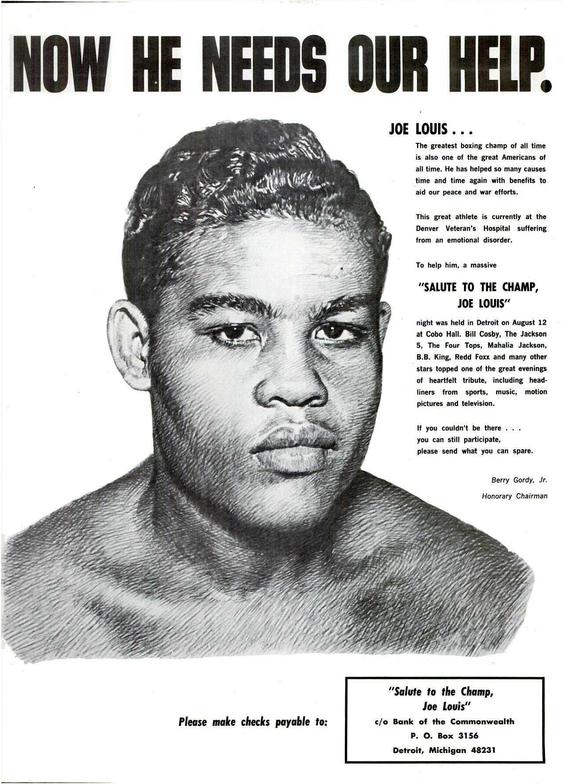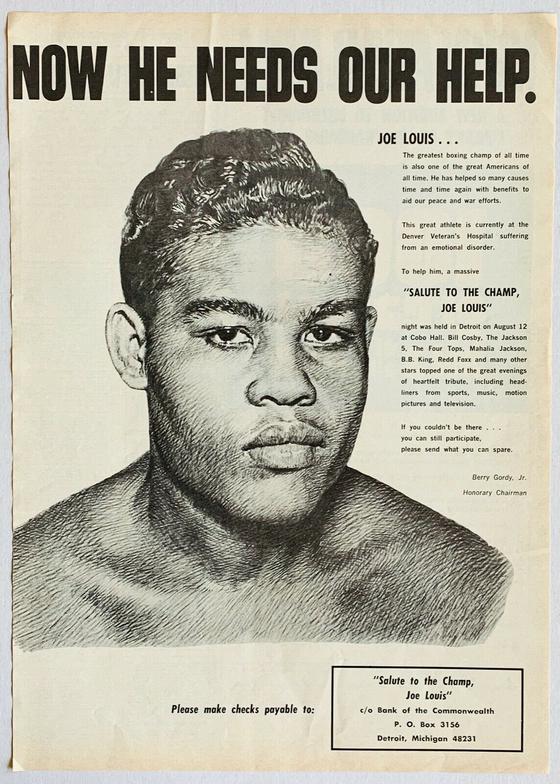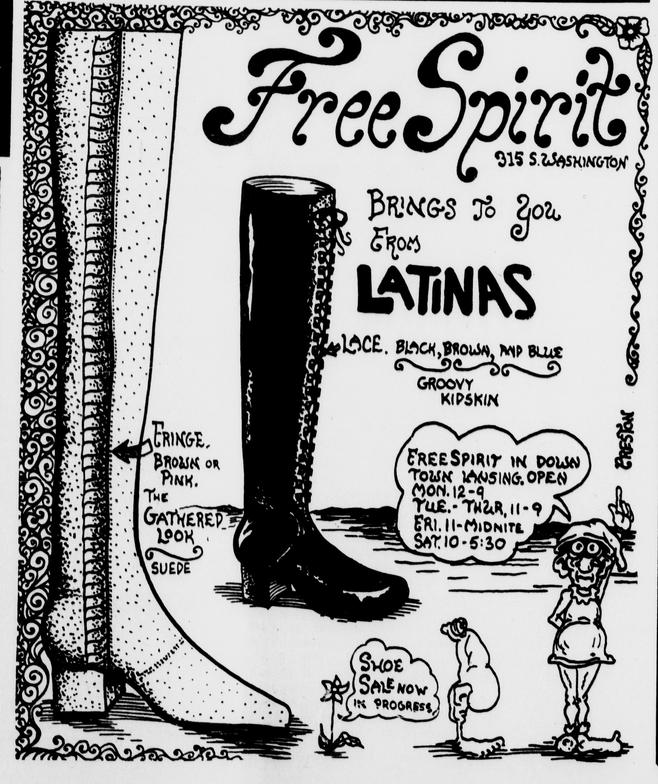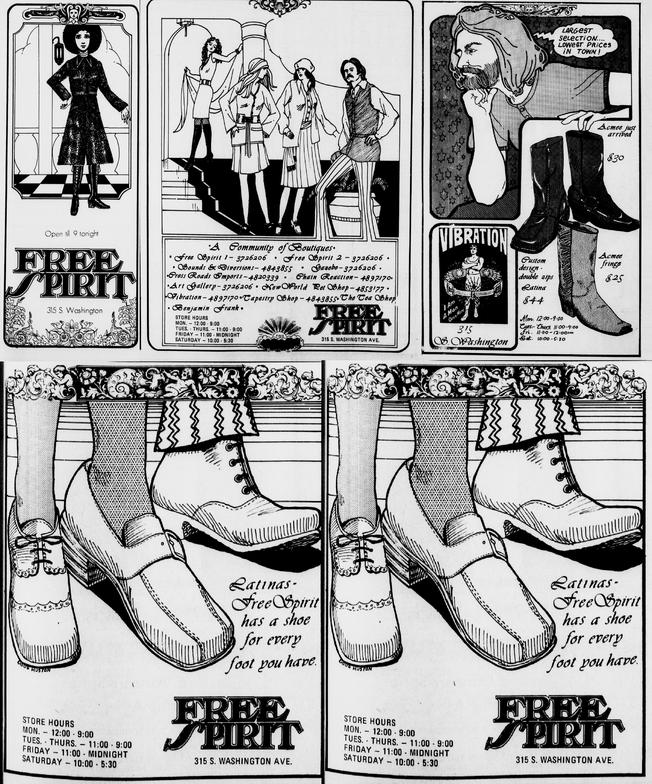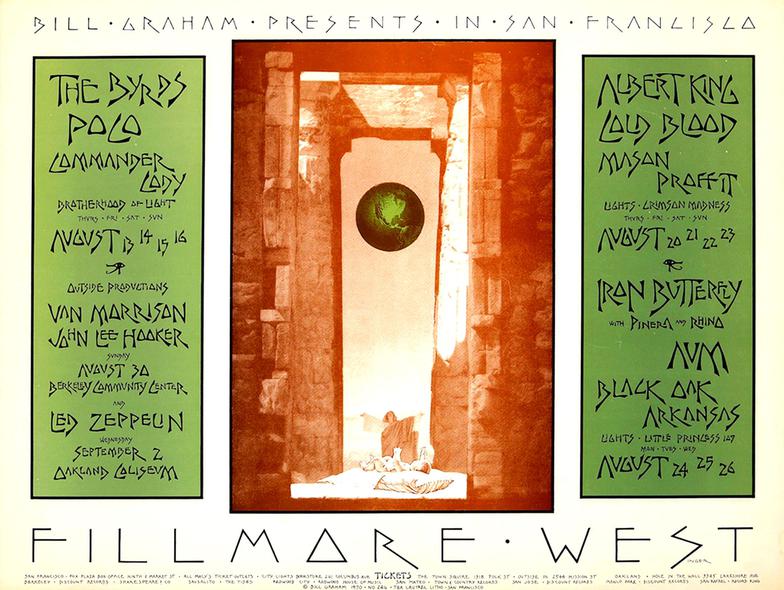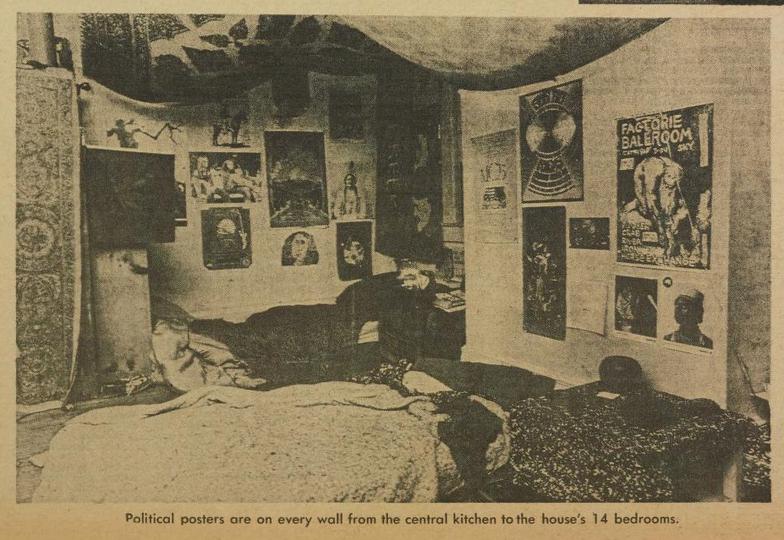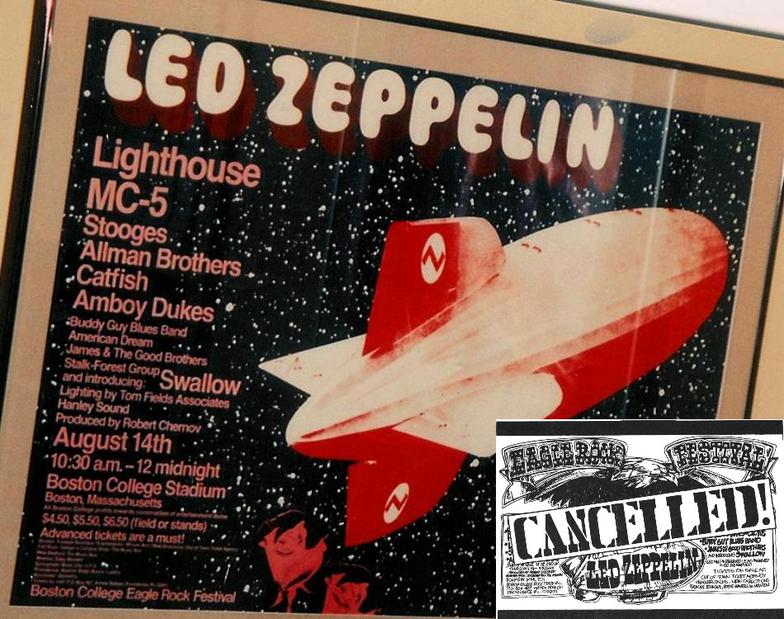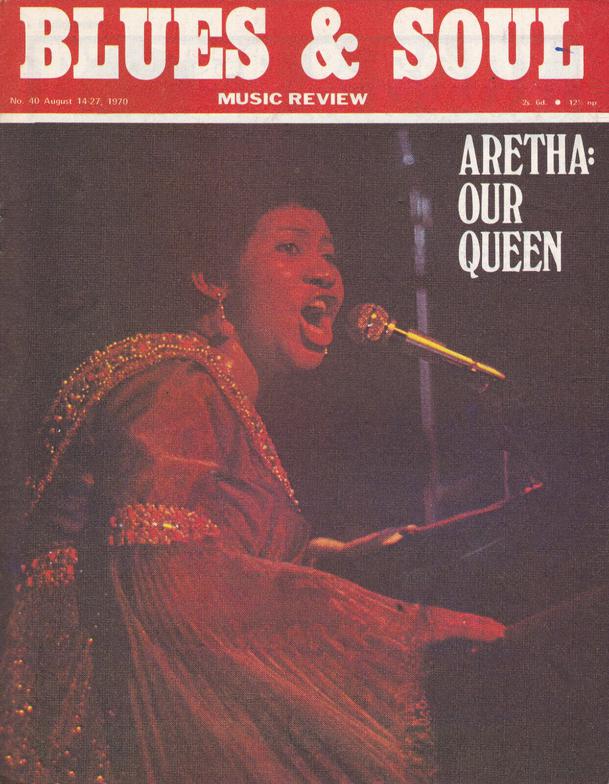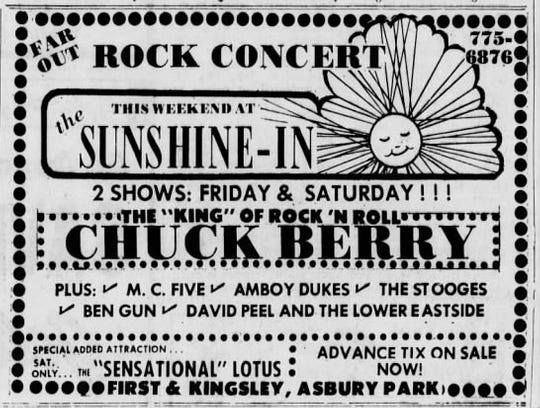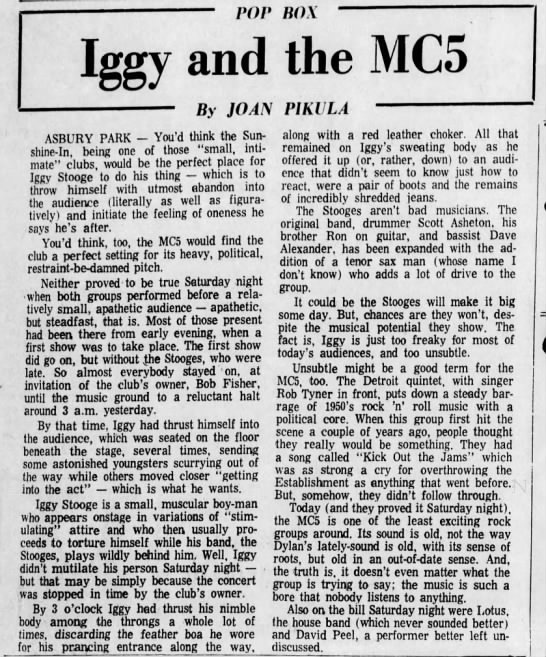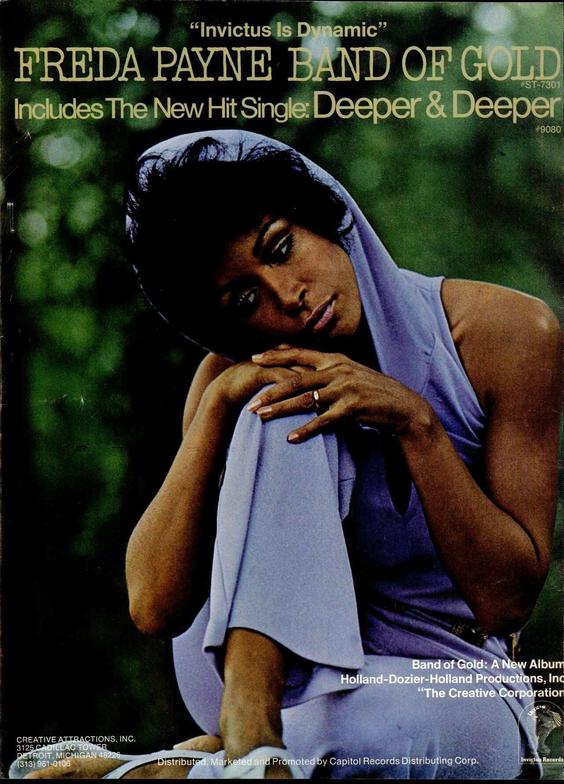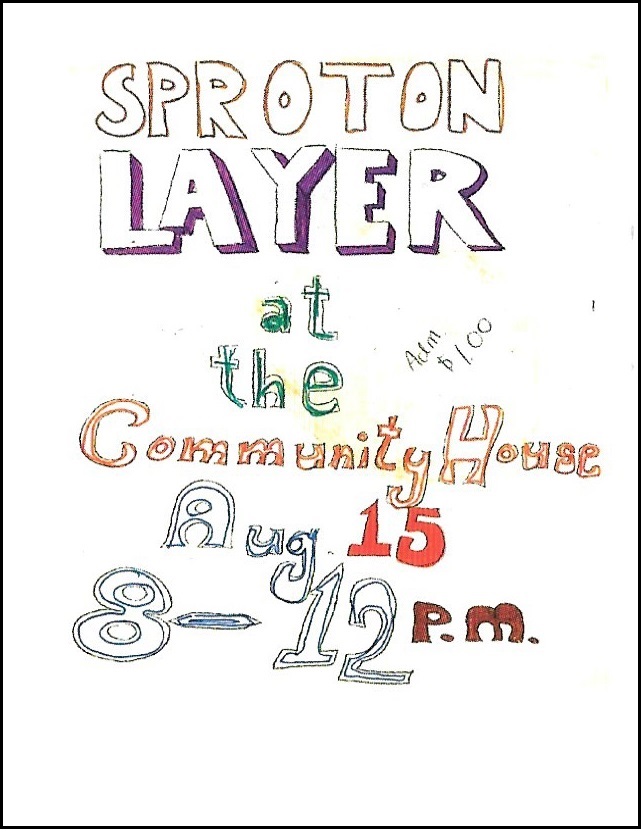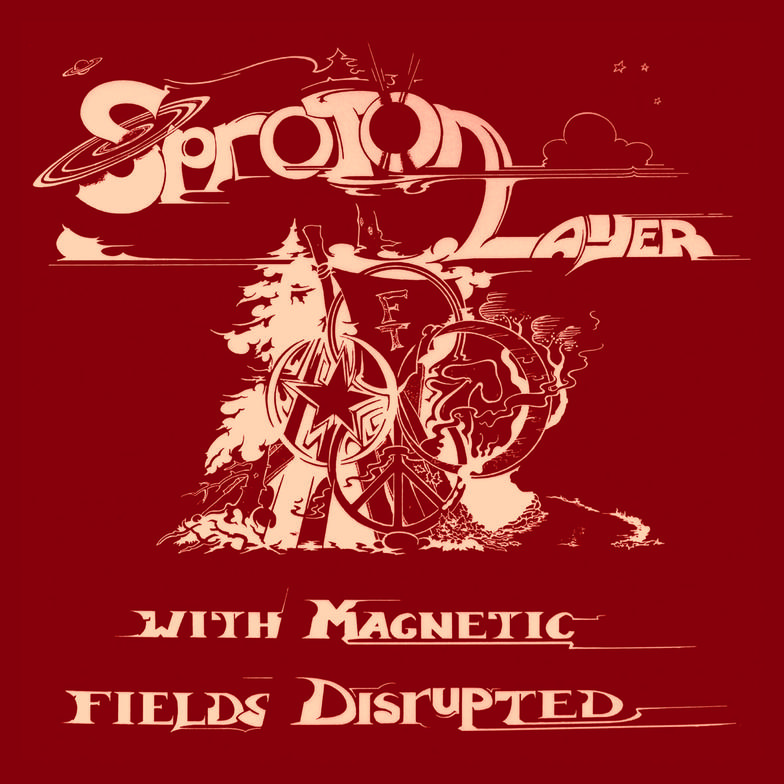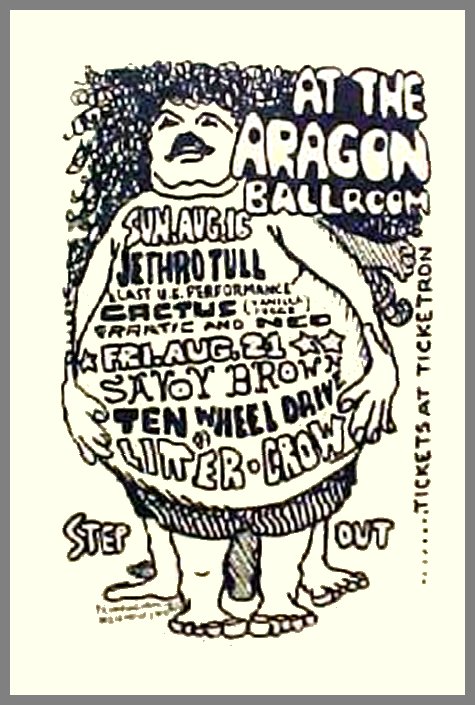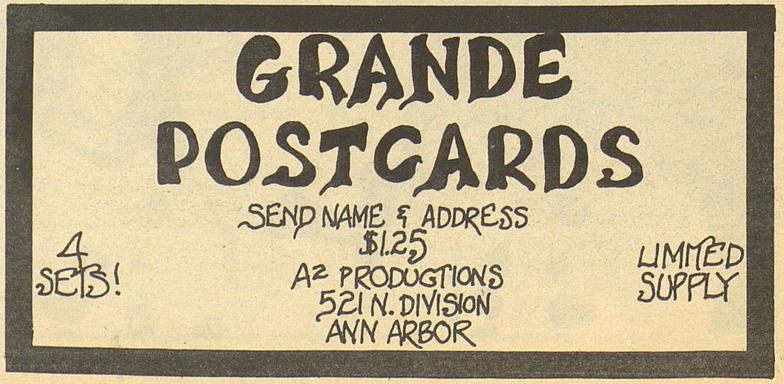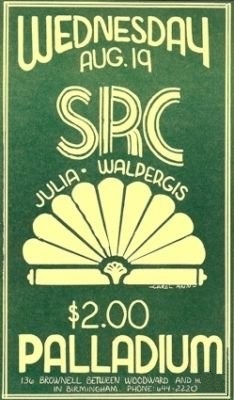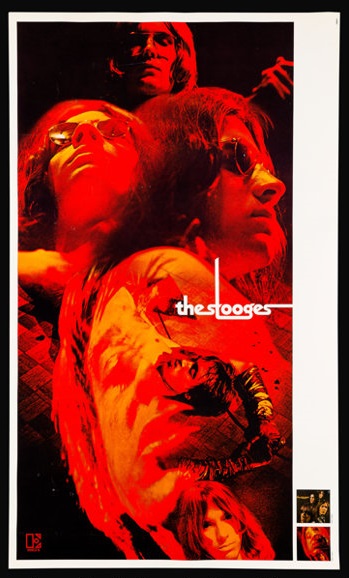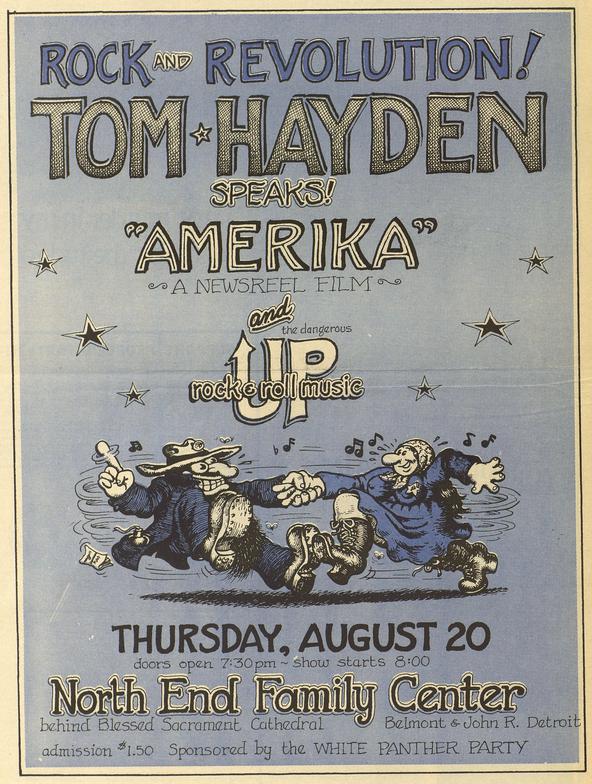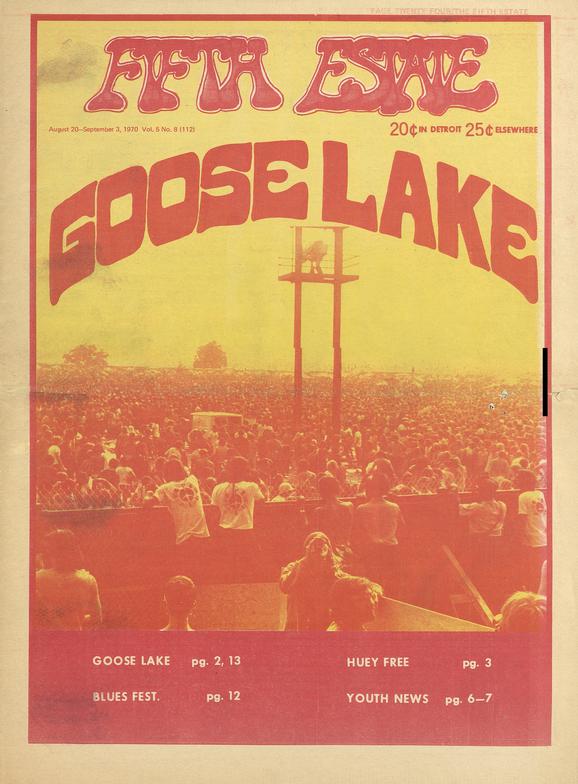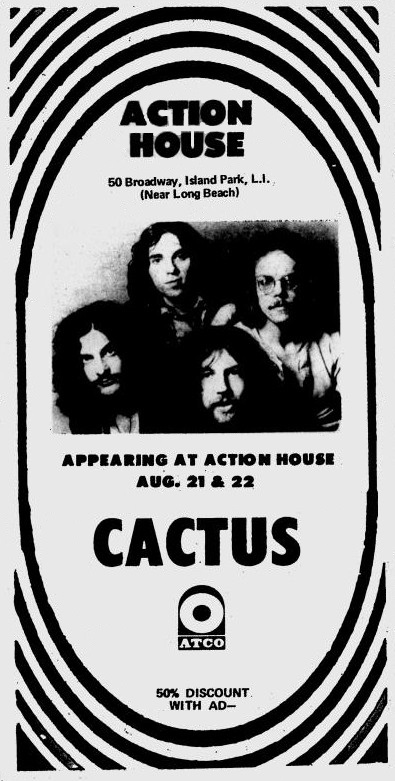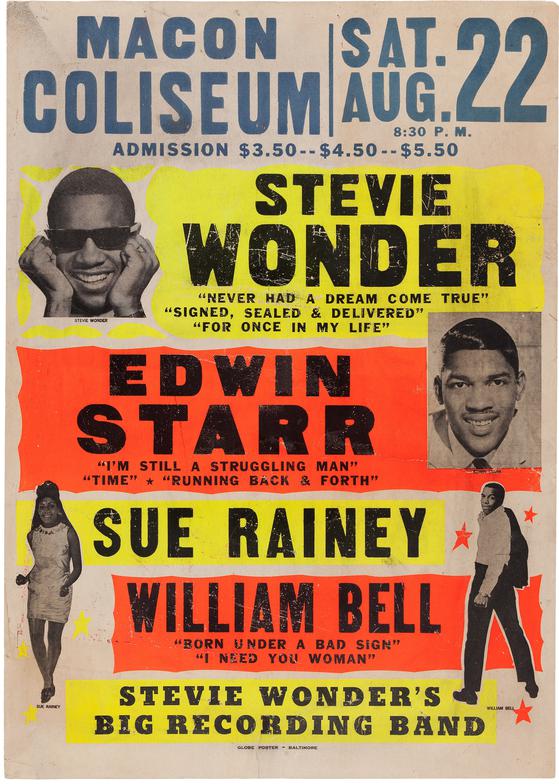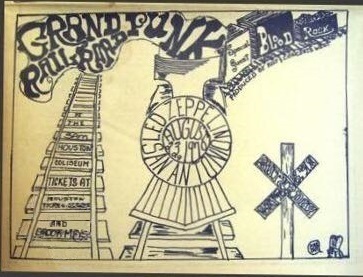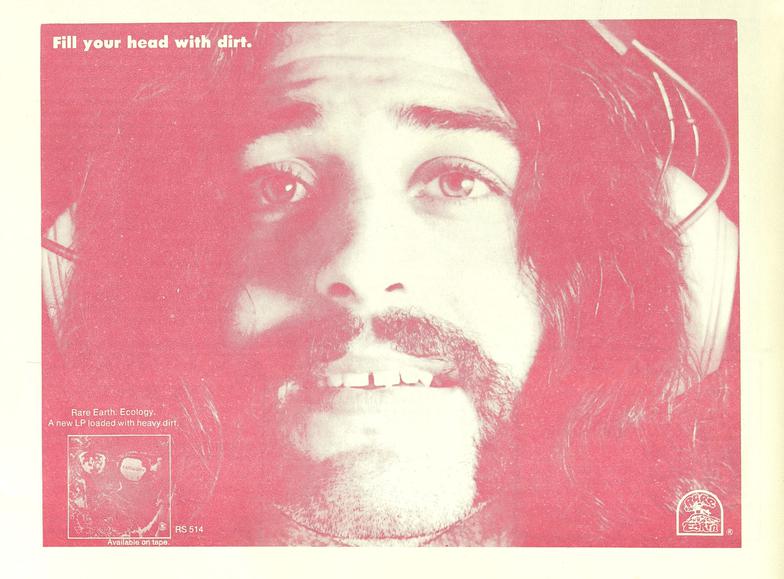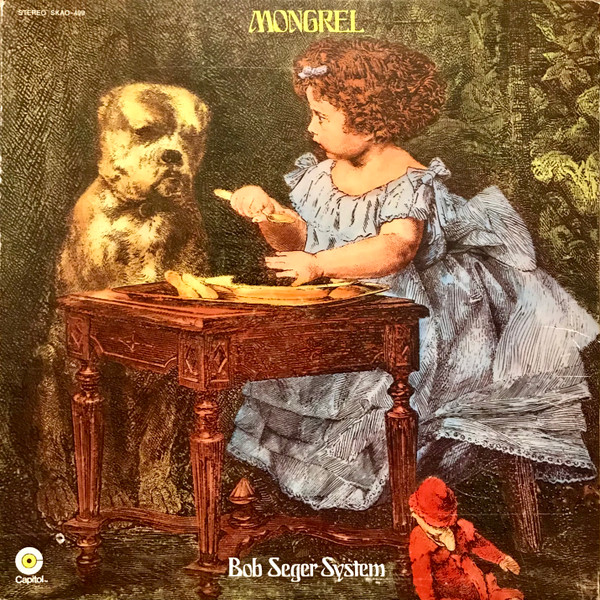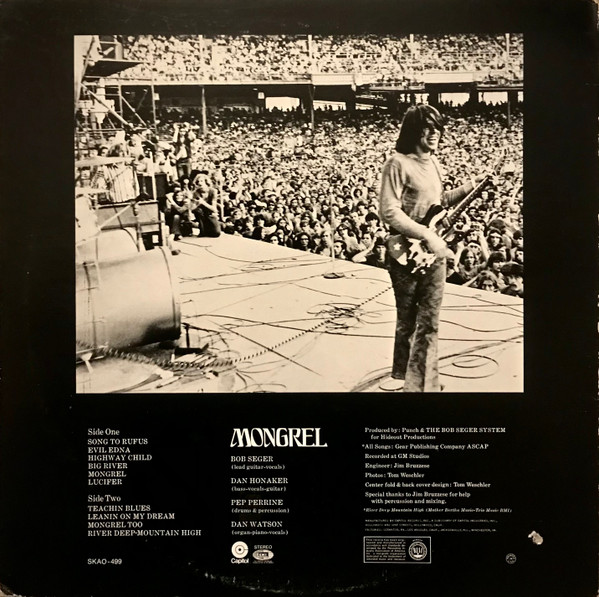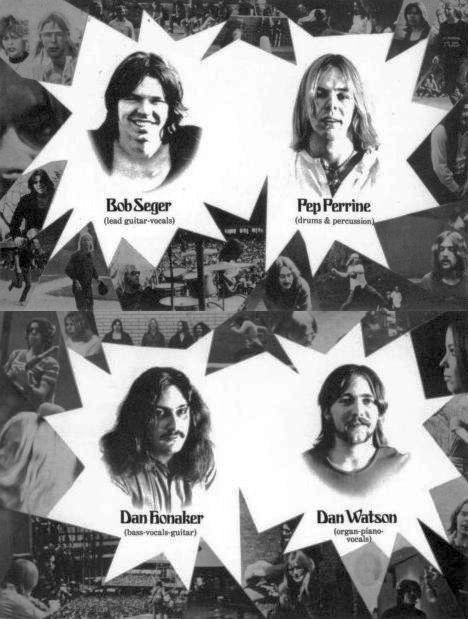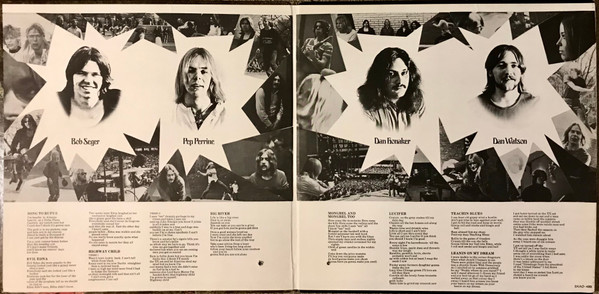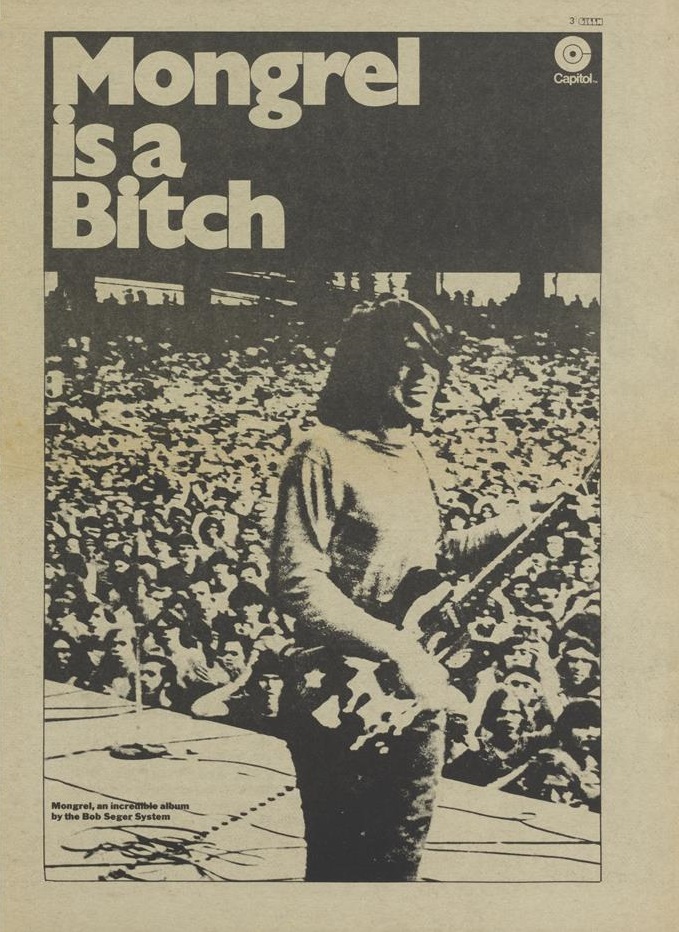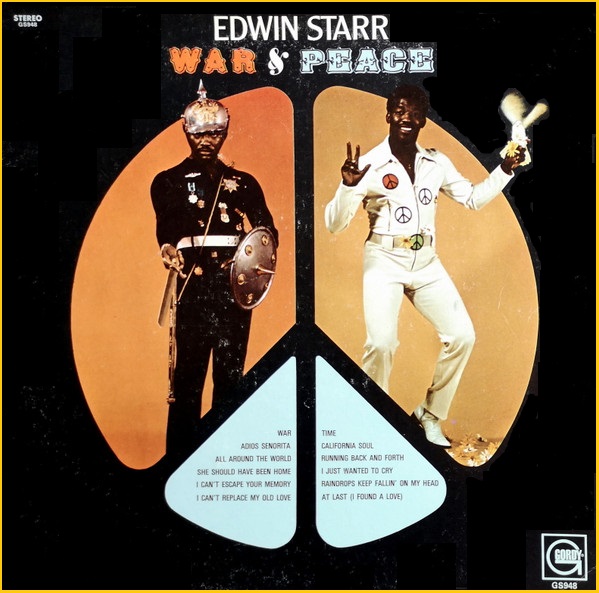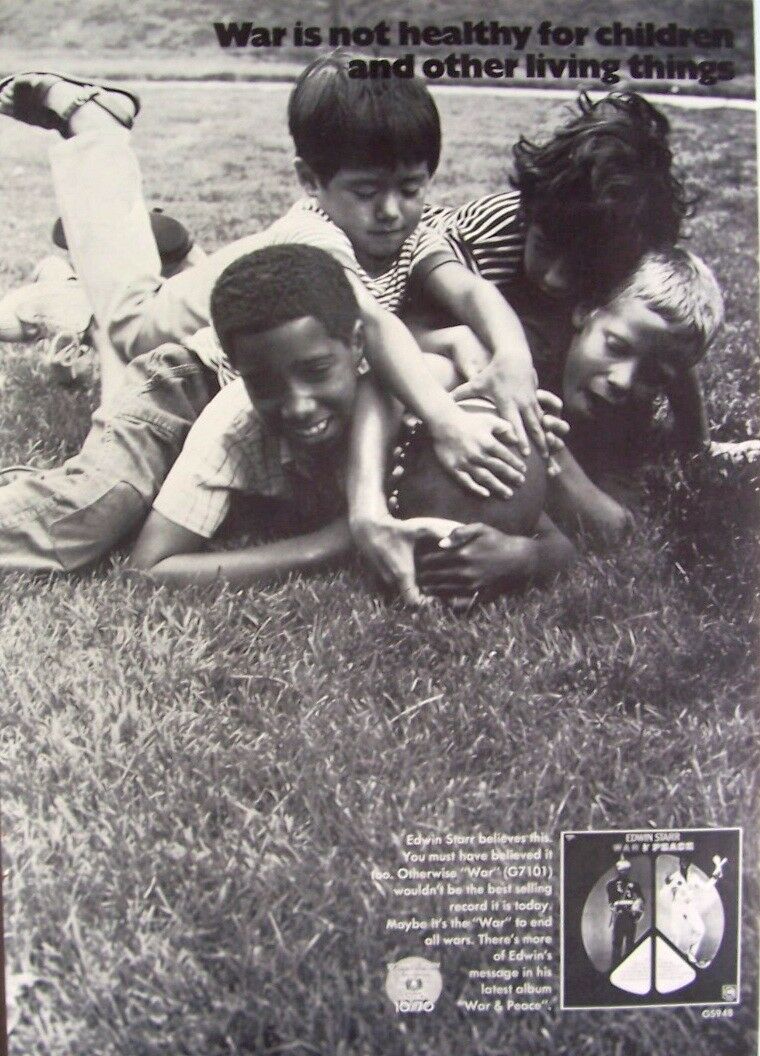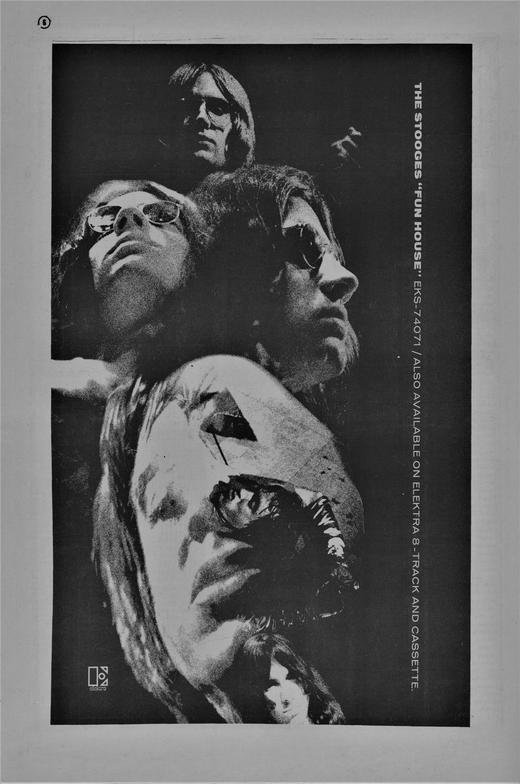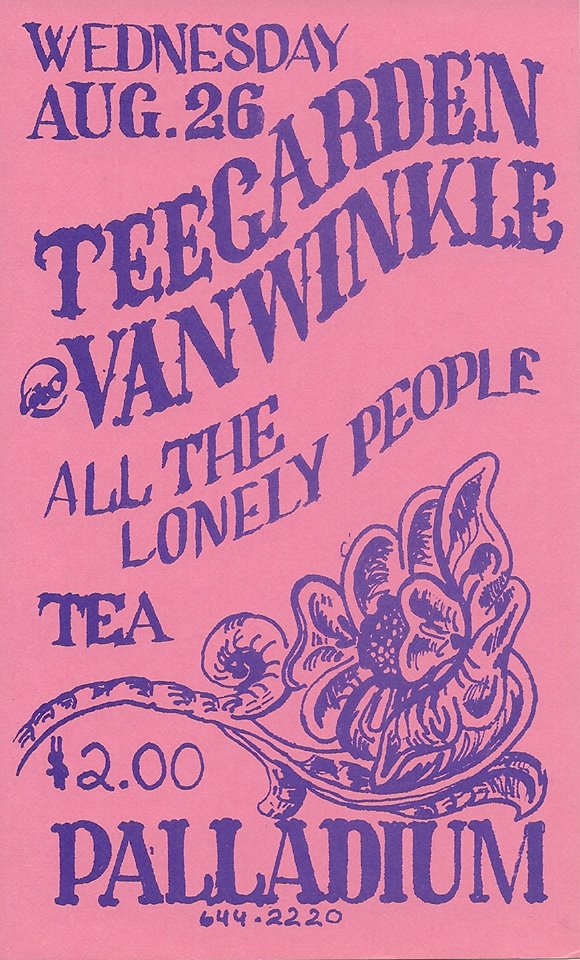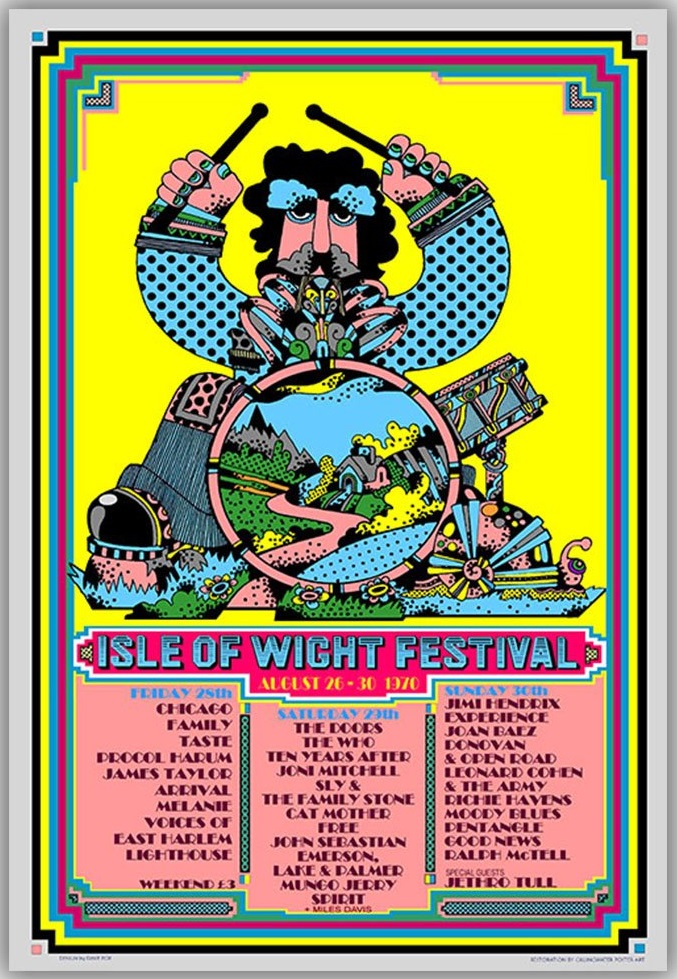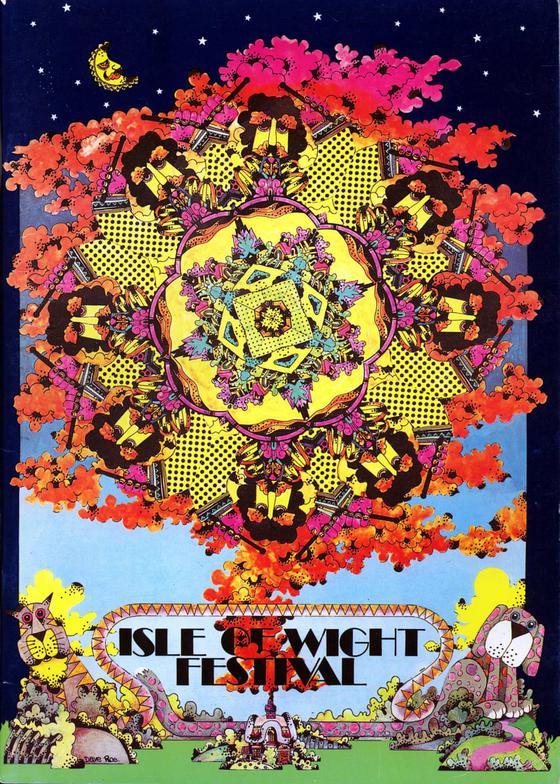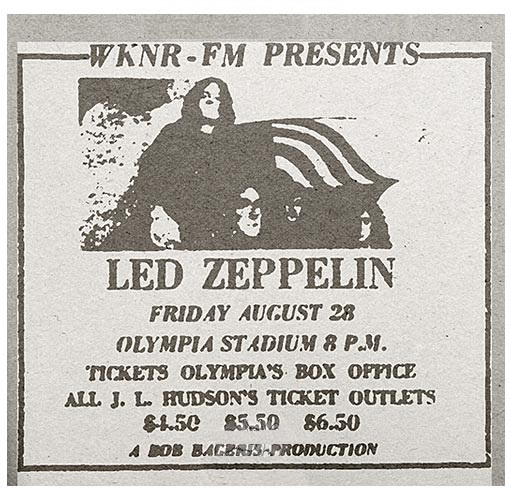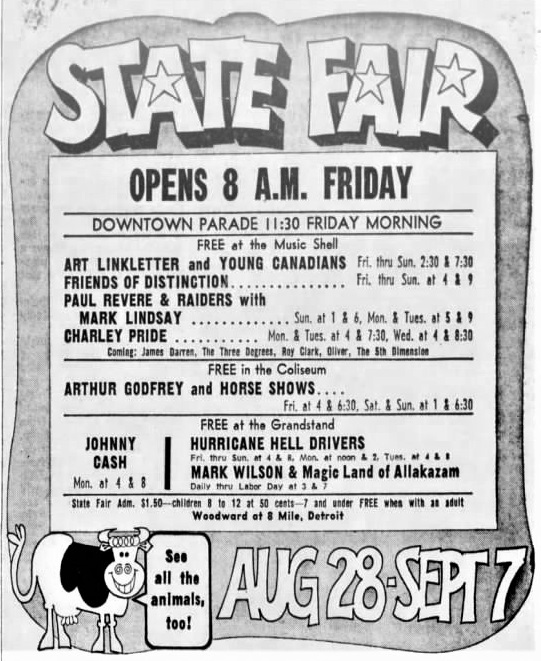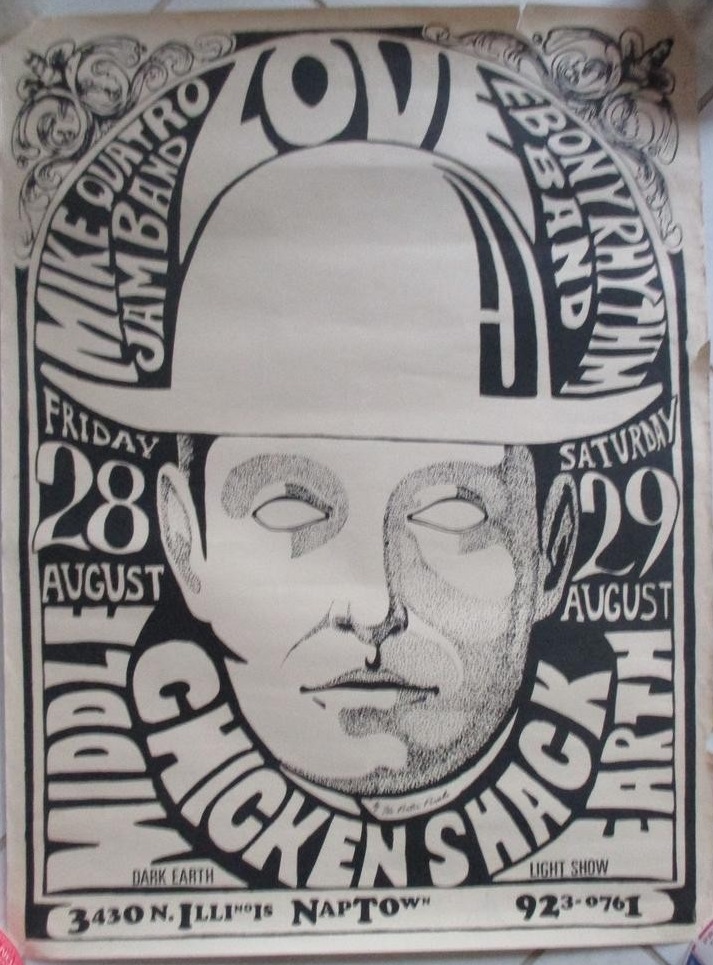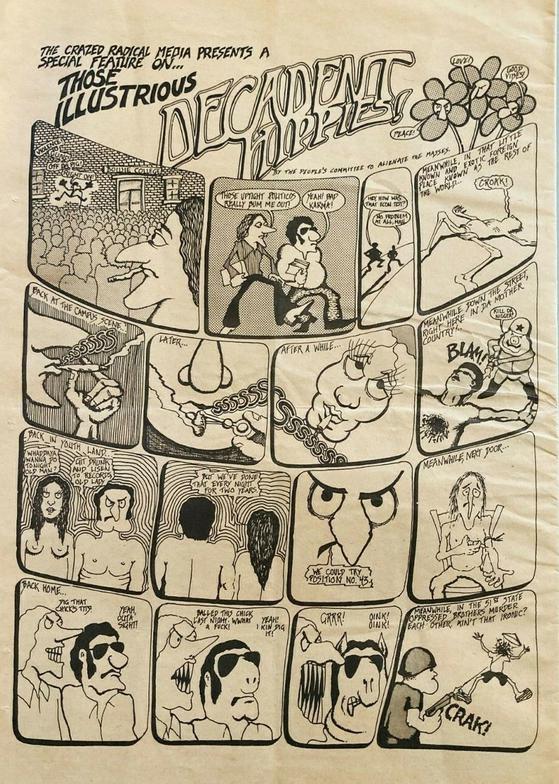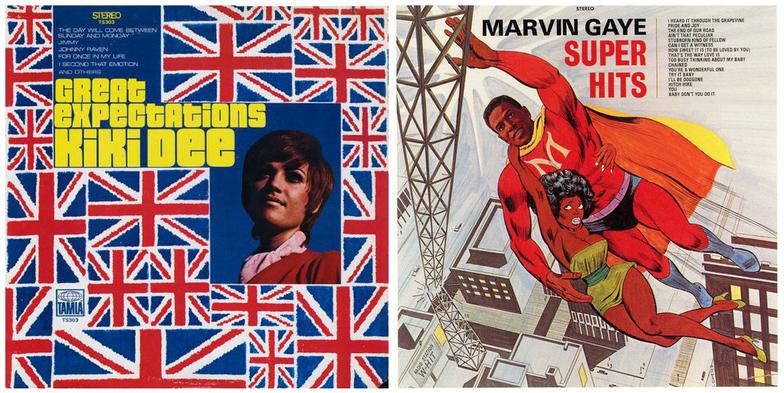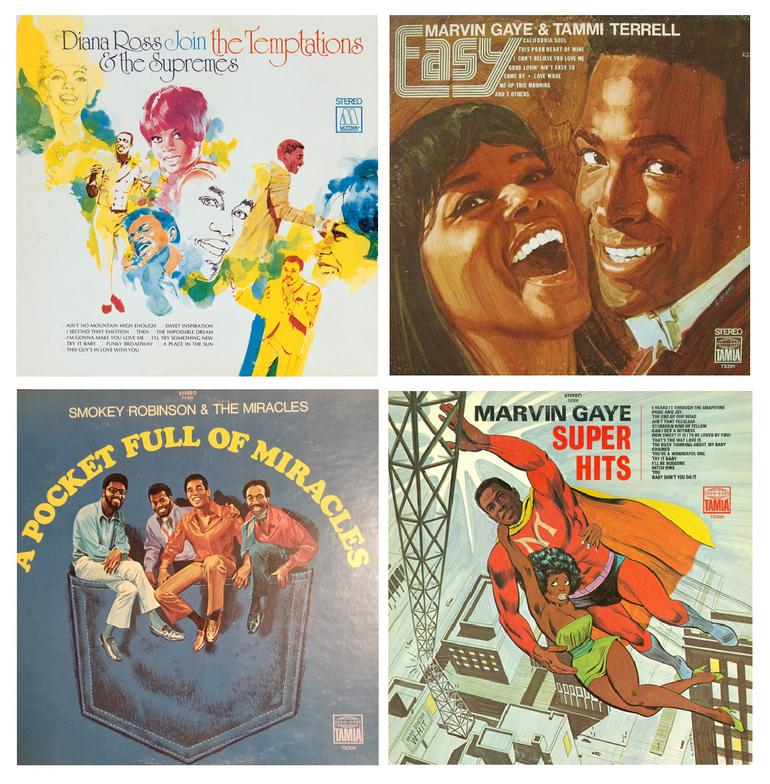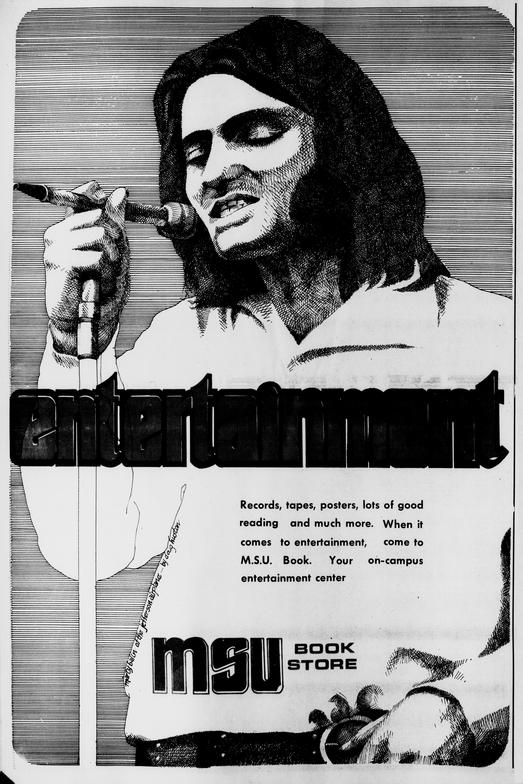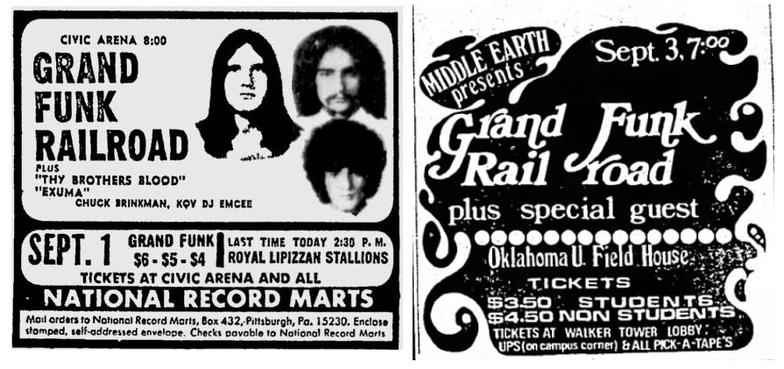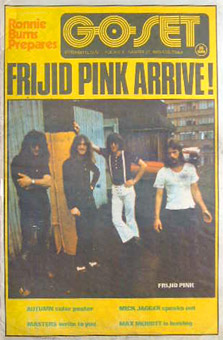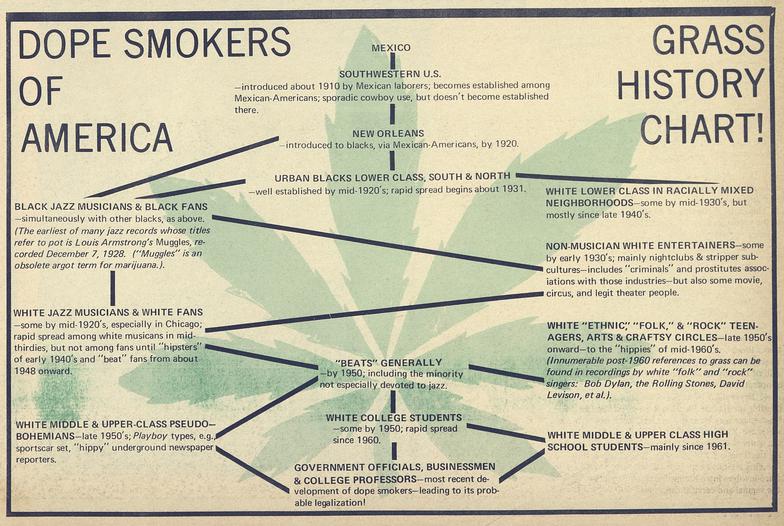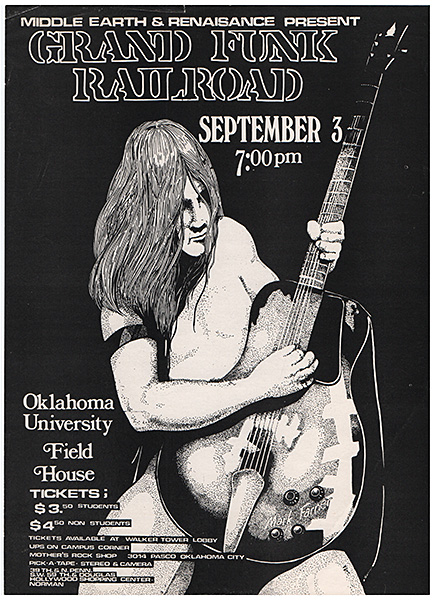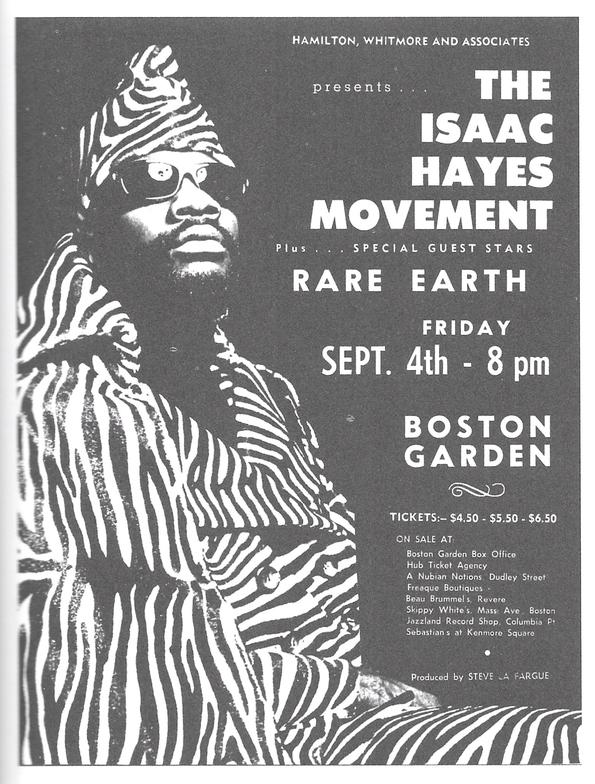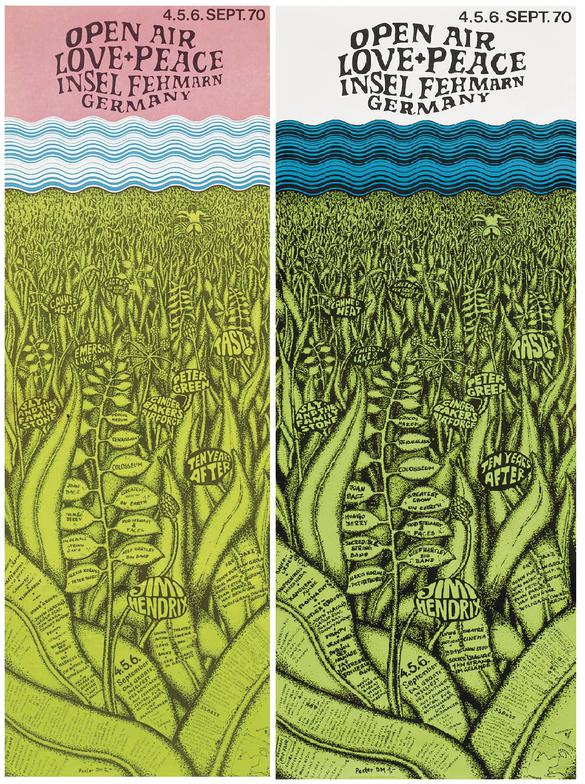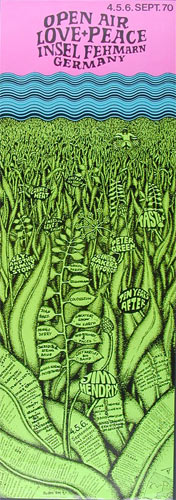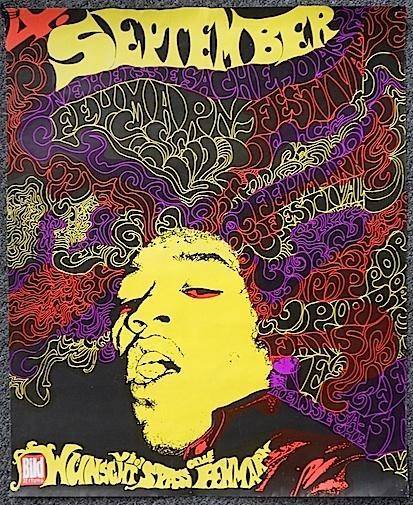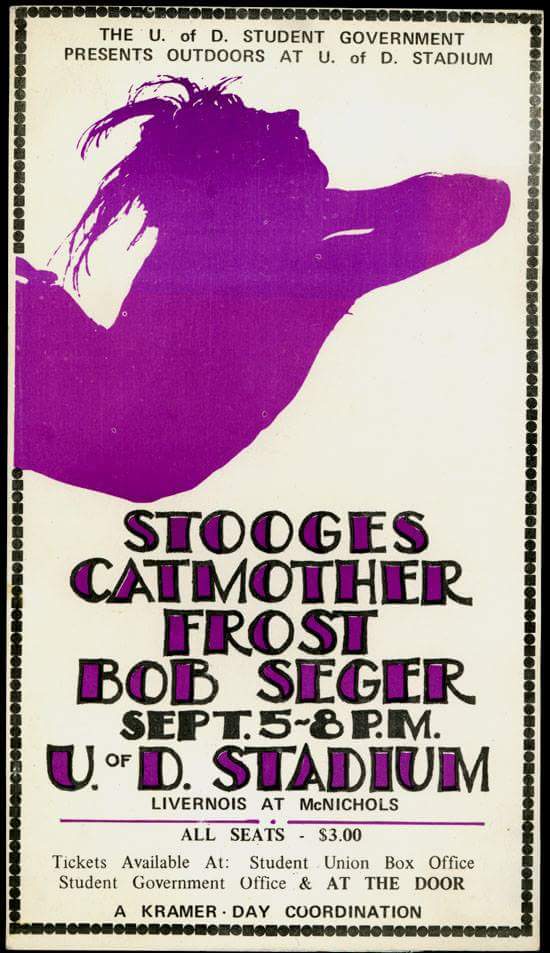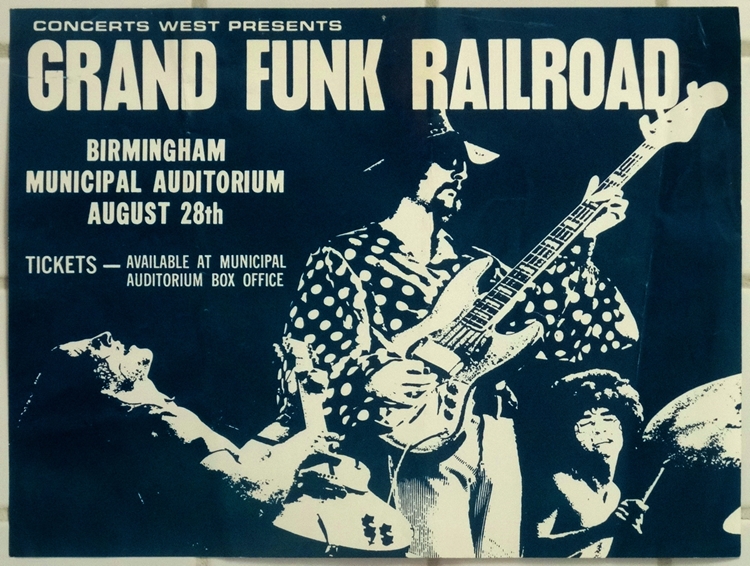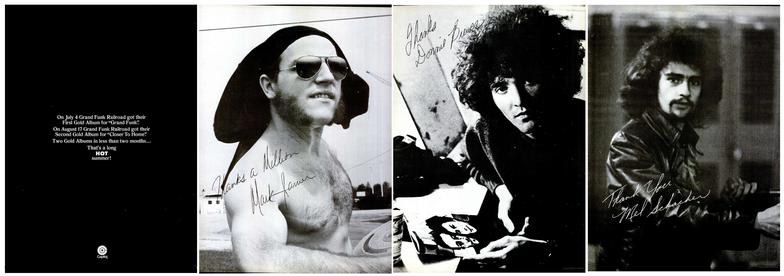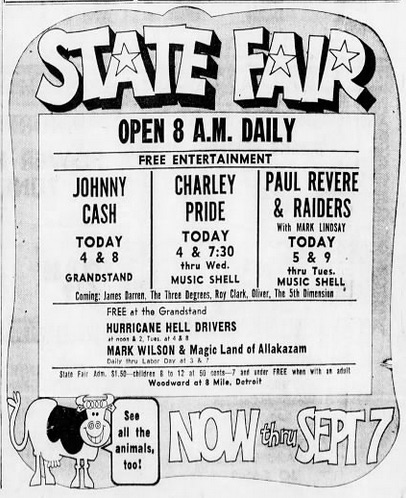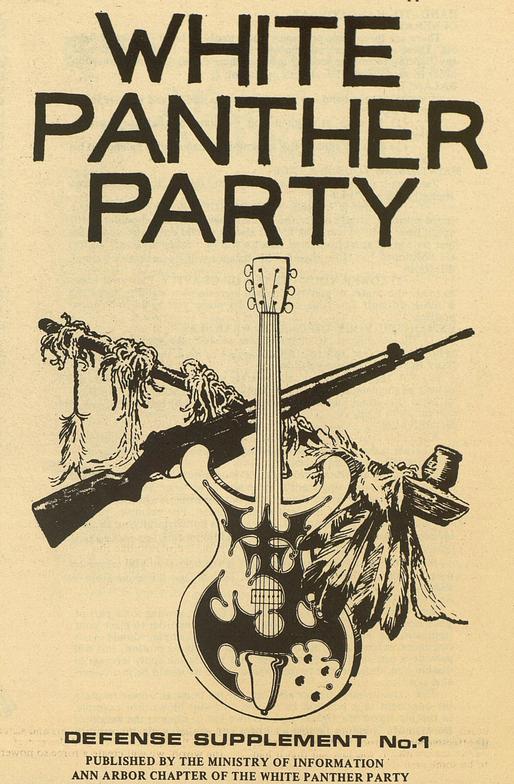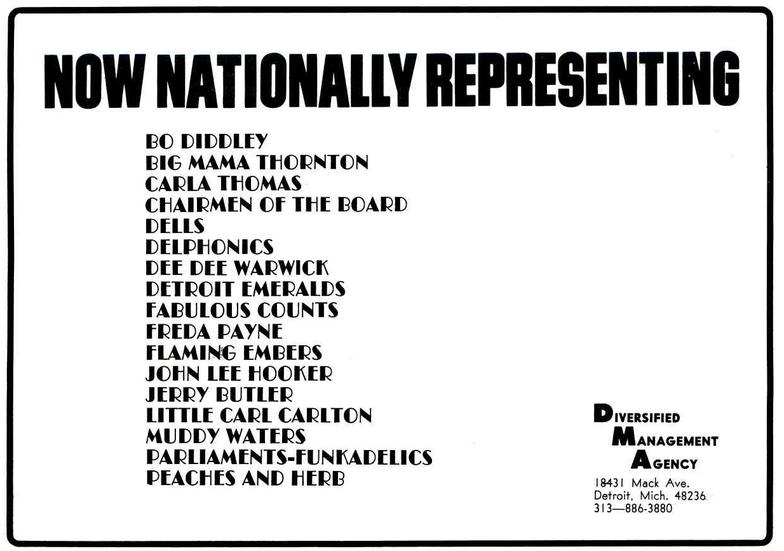Splatt Gallery
Double click here to add text.
Splatt Gallery's History of Michigan Concert Posters
Volume Six - 1970 - Page Fourteen
Berry Gordy organized a “Salute to the Champ” show at Cobo Arena in Detroit, Michigan, August 12, 1970, to raise a target goal of $100,000 to assist boxer Joe Louis, who at the time was interned at a psychiatric hospital in Denver, Colorado. It was hoped that Louis, himself, would attend, but at the last minute he backed out.
The show MC was Bill Cosby and the acts included the Jackson 5, Mahalia Jackson, BB King, Red Foxx, Billy Eckstine, and the Four Tops.
***********************************************************
Boxing style poster for the “Salute to the Champ” show at Cobo Arena in Detroit, Michigan, August 12, 1970.
Photo of Carl Owens’ illustration of boxer Joe Louis, placed on the seat intended for Louis’ appearance at the “Salute to the Champ” show at Cobo Arena in Detroit, Michigan, August 12, 1970.
Post-concert poster asking for additional contributions to support boxer Joe Louis following the “Salute to the Champ” show at Cobo Arena in Detroit, Michigan, August 12, 1970. The illustration of Louis was created by artist Carl Owens and was also placed on the chair intended for Lewis’ appearance during the show.
The ad on the left, in the August 13, 1970 issue of the State News newspaper in East Lansing, Michigan, appears to be the final one by Dennis Preston for the Free Spirit community of boutiques to be published in the paper.
Doug Huston, the staff artist at the State News newspaper in East Lansing, Michigan, whose many concert and movie ads we’ve already seen, took over for Dennis Preston in illustrating the ads for the Free Spirit community of boutiques in the paper, the collection shown on the right, is from August through October of 1970.
Poster by David Singer for the Fillmore West in San Francisco, California listing two Michigan -related artists, Commander Cody on August 13-16, 1970 and John Lee Hooker on August 30th (at the Berkeley Community Center).
The Michigan Daily newspaper in Ann Arbor, Michigan ran a two-page photo essay on the White Panther commune in their 1520 Hill Street home in the paper’s August 14, 1970 edition. The one that caught our eye was the above photo of one of the bedrooms with a very large size version of Al Shamie’s poster for the Factorie Ballroom, which we had thought only existed as handbill.
Killer line-up, cool poster, but just one thing the promoters forgot - to get permission from the college for the use of the Boston College Stadium on August 14, 1970. Permission denied and concert cancelled.
Michigan bands scheduled to open for Led Zeppelin were the MC5, Stooges, Catfish, and Amboy Dukes.
Aretha Franklin on the cover of the August 14, 1970 issue of the British music magazine Blues & Soul.
A potentially “lost show” by the MC5, although we maintain a healthy dose of skepticism if it is not listed in the gateway. However, we are fairly confident about this one, which would have been August 14-15, 1970, at the Sunshine-In in Asbury Park, New Jersey.
There is a single line in the book “Iggy Pop: Open Up and Bleed”, that reads, “…the Stooges headlined over the MC5 in Asbury Park, went on last, and demolished their one-time big brothers.” Some Stooges’ timelines show the August 15 show in Asbury Park, but do not mention the MC5, and they also list an August 14 show at Boston College Stadium, which as we’ve previously posted was cancelled.
But the best evidence for the Asbury park show is a show review that was published in the August 17, 1970 issue of the Asbury Park Press newspaper, shown below.
Show review of Iggy and the MC5 from their appearance at the Sunshine In, Asbury Park, New Jersey on August 15, 1970 in the August 17th issue of the Asbury Park Press newspaper. Since the show at Boston College Stadium which was scheduled for August 14th was cancelled, this show would have been guitarist Bill Cheatham and bassist Zeke Zettner's first gig with the Stooges (although neither were mentioned in the review which did take note of the addition of sax player Steve Mackay, who was new to the East Coast audiences).
No artistic value, but packed with information, this flyer has the details of the two shows by the MC5 at the Sunshine In, Asbury Park, New Jersey on August 15, 1970 (which is also confirmed by a ticket stub and a show review, although it is missing from the gateway timeline).
Ben Gunn and David Peel & the Lower Eastside opened both shows, with the Amboy Dukes included in the first show, and the Stooges included in the second show.
As we mentioned when we posted the show review earlier, this would have been the first Stooges show with guitarist Bill Cheatham and bassist Zeke Zettner, since the show at Boston College Stadium which was scheduled for the day before, on August 14, was cancelled. The review also mentioned sax player Steve Mackay, who was new to the East Coast audiences.
Full-page Invictus Records ad, August 15, 1970, for Freda Payne’s “Band of Gold” album.
Poster/flyer by Roger Miller for Sproton Layer at the Community House in Milan, Michigan on August 15, 1970.
We’ve previously posted a couple of stories about Roger Miller, the Ann Arbor teenager who made hastily-scribbled show flyers in exchange for free admission into The Fifth Dimension nightclub, and his band with his brothers called Sproton Layer.
In the late summer of 1970, they recorded an album, which like many an obscure record never saw the light of day until many decades later.
The band broke up shortly after recording this album, Roger moved to Boston where he later formed the influential post-punk band Mission of Burma, brothers Ben and Larry would later join the infamous Destroy All Monsters.
Sproton Layer – With Magnetic Fields Disrupted (album) (1970)
https://www.youtube.com/watch?v=LzVbcJeIoG0
Poster by an unknown artist for Jethro Tull with Cactus (Vanilla Fudge still in parenthesis) at the Aragon Ballroom in Chicago, Illinois on August 16, 1970.
Here’s one for the collectors, from the August 17, 1970 issue of The Ann Arbor Argus newspaper, four sets of Grande Ballroom postcards for $1.25.
Poster by Carol Ann for the Palladium in Birmingham, Michigan, August 19, 1970, with SRC, Julia, and Walpergis.
A nice, color, Elektra Records promo poster for the Stooges’ second album “Fun House”, released in August 1970.
The Stooges – Fun House (album) (1970)
https://www.youtube.com/watch?v=1OedEgzDl_I
Lester Bangs’ review of the Stooges’ Fun House album in CREEM magazine:
https://tobedamit.com/2017/12/16/fun-house/
Gary Grimshaw poster, using Robert Crumb characters, for a speaking appearance by Tom Hayden, with music by the UP, at the North End Family Center in Detroit, August 20, 1970. The CIA bombing conspiracy charges brought against John Sinclair, Pun Plamondon, and Jack Forrest had drawn national attention within the activist underground, and speakers such as Hayden, and his future wife Jane Fonda, made frequent visits to the area to rally support for their cause.
The Goose Lake Festival, and its immediate aftermath, were the cover story of the August 20, 1970 issue of The Fifth Estate. By most measures, the festival was a rousing success, particularly in light of all the festival fails that we’ve documented in previous posts.
Richard Songer, the millionaire construction contractor who had funded the Rock & Roll Revival at the State Fairgrounds in 1969, had purchased the property and built what he hoped would be a permanent festival location. He hired Russ Gibb to book the acts and Gibb brought in Tom Wright and former Grande Ballroom crew to manage the show.
Tom Wright designed and built a rotating stage that allowed one band to set up while another was playing, and unlike nearly every other major festival, all of the acts performed on time.
Gibb, also aware that a perennial festival problem was gate-crashers, used special poker chips instead of paper tickets to eliminate easy counterfeits. It worked, somewhat, but not to the extent where “everybody paid” as some accounts may claim. Many early arrivals were offered free admission in exchange for working the grounds, and the perimeter was being guarded by biker clubs and White Panther Party members who were easily bribed. Songer claimed that he sold 40,000 admissions and that the total attendance was 80,000. He claimed that police estimates of a crowd size upward of 250,000 people was inflated in order to exaggerate the threat to the community. The most commonly accepted attendance figure is 200,000.
Given the crowd size and the three-day duration, problems were relatively few, and most people remember having a good time. There were close to 200 arrests when people were leaving the park, those who failed to heed the advice from Teegarden & VanWinkle during the closing set to leave their stash behind. Throughout the festival, the police had stayed outside even though photographs of open drug vending were published in the press.
Michigan politicians seized upon the evidence of those photographs to make their case that the festival was a debauched affair, they served an injunction against future festivals at the site, proposed legislation to limit crowd sizes, and even indicted Songer for illegal distribution of drugs, a charge that was later dropped but served as the death knell for large scale rock festivals in Michigan that lasted for years.
A mistake that Wright readily admitted was that he restricted press access to the backstage area, leaving whatever national reporters that did attend no vantage point beyond the average concert goer. As a result, the few reports that did appear emphasized the drugs, the garbage, and the dirt, all too neatly fitting their pre-conceived narrative that the festival scene was dead.
One other casualty of the Goose Lake Festival was the original line-up of the Stooges. Bassist Dave Alexander got a bit too wasted before the band went on, and once on-stage, he froze, not being able to play a note. Iggy was furious and fired him immediately after the set, and the lifelong companion of the Asheton brothers was no longer in the band.
The Stooge’s second album, “Funhouse” was released a couple of weeks after the festival. The title track and the song “Dirt” were written around Dave Alexander’s bass lines.
The Stooges – Dirt (1970)
https://www.youtube.com/watch?v=QLxm45rN1lM
Newspaper ad for Cactus at the Action House in Long Island, New York, August 21-22, 1970.
A sweet Globe Poster for Stevie Wonder headlining a concert in Macon, Georgia, August 22, 1970. His album “Signed, Sealed & Delivered” had just been released a two weeks earlier, the title track was the first single that Wonder had produced on his own, and it was the first to feature his female backup singing group of Linda Tucker Laurence, Syreeta Wright, and Venetta Fields. Wonder and Wright would get married in September.
The following video is from an appearance on the Dick Cavett TV show eleven days earlier than this concert, on August 11, and features the backup singers and what is referred to on the poster as “Stevie Wonder’s Big Recording Band”, although with just guitar, bass, and drums, it’s not that big. Perhaps someone can identify each of them?
Stevie Wonder – Signed, Sealed, Delivered I’m Yours (live 8/11/1970)
https://www.youtube.com/watch?v=zxexKLsLpw0
An unfortunately poor image of a creative poster for a fine line-up of Led Zeppelin, Grand Funk Railroad, and Bloodrock in San Antonio, Texas on August 23, 1970. The show was cancelled due to an outbreak of children's diphtheria in San Antonio.
A half-page ad for Rare Earth’s fourth album, “Ecology”, in the August, 1970 issue of the Chicago Seed newspaper.
The album featured their hit single from the summer, following their formula of an extended rocked-out version of an old Motown hit, the edited version released as a radio-friendly single charted higher than the Temptation’s original.
Rare Earth – (I Know) I’m Losing You (1970)
https://www.youtube.com/watch?v=rcE2hni0K6w
Bob Seger’s third album was released in August 1970. Only one single was released from the album (“Lucifer” back in February).
Promo poster, likely commissioned by manager Punch Andrews, for the Bob Seger System, which was also used in the gatefold of the Mongrel album cover. Here is another song from the album that probably should have been released as a single.
Bob Seger System – Big River (1970)
https://www.youtube.com/watch?v=mf7Jn3REwlk
Inside gatefold cover of the "Mongrel" album by the Bob Seger System
Promo ad/poster for Bob Seger’s “Mongrel” album from CREEM magazine, and one more track from it.
Bob Seger System – Evil Edna (1970)
https://www.youtube.com/watch?v=QtutsPP82YE
One of the songs buried on side two of the Temptations’ “Psychedelic Shack” album was the Norman Whitfield – Barrett Strong composition “War”. Motown began receiving letters asking to release the track as a single, but both the label and the band were afraid that the song would alienate the Temptations’ more conservative fans, so Edwin Starr volunteered to re-record it and it became his signature hit, holding the #1 spot on the Billboard charts for weeks and ending up as the #5 song for the 1970 year-end list.
Edwin Starr – War (1970)
https://www.youtube.com/watch?v=ztZI2aLQ9Sw
Motown Records ad for Edwin Starr’s “War & Peace” album.
Full-page ad for the Stooges’ second album, from The East Village Other newspaper in NYC. In the review of the Stooges’ three-night stand at Ungano’s, August 18-20, 1970 from the same issue, was a photo showing the two new members, Steve Mackay and Dave Alexander’s replacement on bass, Zeke Zettner. They may have also added second guitarist, Billy Cheatham by this time. There was also a tape from one of these shows.
The Stooges – Have Some Fun (live at Ungano’s, NYC) (08/18/70)
https://www.youtube.com/watch?v=LvJwRFlFN7Y
Teegarden & Van Winkle with All the Lonely People at the Palladium in Birmingham, Michigan, August 26, 1970. Poster/handbill by artist Carol Ann.
Poster by David Roe for the 1970 Isle of Wight Festival in England, August 26-30, 1970, the largest music event of the era, with an estimated 600,000 to 700,000 in attendance. Although not listed on the poster, the American band Cactus closed out the Friday show on August 28th. Like the 2nd Atlanta Pop Festival earlier in the year, Cactus may have been invited due to the close relationship between guitarist Jim McCarty and Jimi Hendrix. In addition to Hendrix, the Isle of Wight Festival featured the Who, the Doors, Miles Davis, Ten Years After, Emerson, Lake & Palmer (only their second gig), Sly & the Family Stone, Jethro Tull, Supertramp (who had just released their debut album), and over fifty others.
Cactus and the Jimi Hendrix Experience were among the half-dozen or so acts that performed at both the 2nd Atlanta Pop and the Isle of Wight Festivals, the others being Richie Havens, Procol Harum, Terry Reid, John Sebastian and Ten Years After.
A three-LP set called “The First Great Rock Festivals of the Seventies” was released in 1971 and featured one disc from the 2nd Atlanta Pop Festival and two discs from the Isle of Wight, which included two songs by Cactus at the Isle of Wight Festival.
Cactus - No Need To Worry/Parchman Farm (Isle Of Wight Festival 8/28/70)
https://www.youtube.com/watch?v=JHoBpdWG4K8
Led Zeppelin made their seventh Detroit appearance, returning again to the Olympia Stadium, August 28, 1970.
Details about the show (which is missing from the concert database) can be found here:
https://www.ledzeppelin.com/show/olympia-stadium-august-28-1970
The Michigan State Fair ran from August 28, 1970 through September 7th, with appearances by Art Linkletter, Friends of Distinction, Johnny Cash, Charley Pride, and Paul Revere & the Raiders.
Poster by an unknown artist for an appearance by the Mike Quatro Jam Band at Middle Earth in Indianapolis, Indiana, August 28-29, 1970.
A full-page cartoon by Ann Arbor artist Dave Baker in the August 31, 1970 issue of the Madison Kaleidoscope newspaper in Madison, Wisconsin.
Tom Schlesinger, Motown’s Director of Advertising & Creative Concepts, whose striking billboards were popping up around the Motor City, also had a hand in the design of the company’s record covers, working with art director Curtis McNair and illustrator Carl Owens.
Marvin Gaye apparently hated the super-hero cartoon of himself that was the cover illustration of his “Super Hits” compilation album released in September 1970. At the time, he was in the studio recording his landmark album “What’s Going On” and becoming very serious about his creative control over his music, and his socially conscious lyrics and message. Rescuing a damsel in distress with a manly “M” on his overly muscled chest was not what he had in mind as his self-image.
Barney Ales, Motown’s executive vice president and general manager at the time, recalled, “He went bananas. He called me, then he called Berry, then Berry called me.” Ales placated Marvin by promising that the cover would be changed after the first pressing, although it never was. British author Adam White, whose excellent “West Grand Blog” is our source for this story, was personally contacted by Marvin’s widow Jan Gaye, who told him, “Don’t mess with the superhero magic,” she whispered, “He told me he liked it!”
Schlesinger and McNair also designed the cover art for Kiki Dee’s one, and only, album released on Motown Records, her second, called “Great Expectations” with stand-out artwork of the red, white, and blue Union Jack flags. Their distributor told them, falsely, that the cover would entitle royalties of UK sales to the Queen, so it was replaced for the British release with a photo of Dee.
Dee’s time with Motown only lasted the ten to twelve weeks in Detroit recording the album. The company was looking to sign a UK artist and apparently the son of someone at Motown had heard her debut album and made the recommendation. She came to Detroit, her first time in the US, in her early twenties, and worked with producer Frank Wilson on a handful of tracks, for the rest of the album she recorded vocals over existing instrumental tapes.
The album’s lead track “The Day Will Come Between Sunday and Monday” is now a Northern Soul favorite. In the video linked below, Dee lip-synchs among an audience who must have been instructed to look sullen and bored, and the guy sitting on the stage better watch out for his hand when she starts dancing!
Kiki Dee – The Day Will Come Between Sunday and Monday (1970)
https://www.youtube.com/watch?v=z-X2KXtbYRQ
Four album covers illustrated by Carl Owens for Motown Records. “Diana Ross & The Supremes Join The Temptations” in 1968, “Easy” by Marvin Gaye & Tammi Terrell in 1969, “A Pocket Full Of Miracles” by Smokey Robinson & The Miracles in 1970, and Marvin Gaye’s “Super Hits” in 1970.
Doug Huston illustration of Marty Balin of the Jefferson Airplane in an ad for the MSU Bookstore in East Lansing, September 1, 1970.
A pair of ads for Grand Funk Railroad, in Pittsburgh, Pennsylvania on September 1, 1970, and in Oklahoma two days later, in their biggest year of touring, with at least 95 shows in 1970.
Popular down under, Frijid Pink made headline news and magazine covers on their tour of Australia, September 1-11, 1970.
A concise history of grass from the September 3, 1970 issue of The Fifth Estate newspaper, predicting “probable legalization”.
Poster for Grand Funk Railroad at Oklahoma University in Norman, Oklahoma on September 3, 1970.
A poster with Rare Earth opening for Isaac Hayes at the Boston Garden on September 4, 1970.
Posters for the Open Air Love + Peace festival on the Isle of Fehmarn, Germany, September 4-6, 1970, notable in that it is Jimi Hendrix’s final concert performance. The poster design had the band names, and an amazing amount of detail information, including train schedules, imbedded into a field of foliage, a drummer with a peace sign on the drum head is hidden within. Somewhat surprisingly, the artist is unknown, what almost looks like a signature at the bottom is actually the price of the poster, DM 1- for the small version and DM 2- for the large one.
The Cry for Love tour had completed its thirty-plus US shows, and kicked off the European leg with the celebrated concert at the Isle of Wight in England. But after the sixth show in, bassist Billy Cox became ill and the tour was cancelled. Hendrix returned to London and attended some parties and jam sessions while he looked for a replacement bass player, but he passed away just twelve days after this last show.
If you look through the leaves of artists at the festival, you’ll find Cactus, billed as “Ex Vanilla Fudge”, which we never tire of pointing out that the band included Jim McCarty and Rusty Day. McCarty, as you’ll recall, had a good working relationship with Hendrix, following the break-up of the Detroit Wheels. After a brief stint with the Siegal-Schwall band, McCarty joined the Buddy Miles Express for two albums, the second produced by Hendrix.
McCarty has recounted that it was intimidating doing guitar overdubs with Hendrix in the studio, but Hendrix “was a Mitch Ryder & the Detroit Wheels fan, so it was cool”.
A magazine ad/poster for the Open Air Love + Peace festival on the Isle of Fehmarn, Germany, September 4-6, 1970, Jimi Hendrix’s final concert performance.
A poster for Grand Funk Railroad in Birmingham, Alabama on August 28, 1970.
A deluxe four-page spread for Grand Funk railroad in the August 29, 1970 issue of Billboard magazine.
The first page reads, “On July 4 Grand Funk Railroad got their First Gold Album for “Grand Funk”. On August 17 Grand Funk Railroad got their Second Gold Album for “Closer To Home”. Two Gold Albums in than two months…That’s a long HOT summer!”
Artwork by Gary Grimshaw in the August 27, 1970 edition of the Ann Arbor Argus newspaper in Ann Arbor, Michigan.
Re-using the “elbow silhouette” image first seen when the Stooges played an Ann Arbor film theater in July 1969, it is used on this poster by an unknown artist for a show at the University of Detroit, with the Stooges, Catmother, Frost, and Bob Seger, September 5, 1970, a Kramer-Day production.
Volume Six - 1970 - continues - HERE
A Diversified Management Agency (DMA) ad in the August 22, 1970 issue of Billboeard Magazine.


